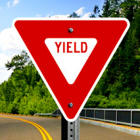
18 Jan 2023
For the first time in five quarters The FTSE 250 outperformed the FTSE 100 (+9.8% vs +8.1% compared to Q3). This does not change the fact that the big-cap index with international exposure trounced its smaller more domestically exposed rival over the year as a whole (+1% vs -20%). But some recovery by FTSE 250 shares would be very welcome in the face of much public negativity about the UK economy. In my Q3 report I wrote that half a dozen shares must be long term buys. I invest in line with what I perceive as probability and necessarily one is sometimes correct. While I take a brief lap of honour I shall recite as follows – Sainsbury +40%, Tesco +20%, Halfords +39%, Kingfisher +23%, Pets At Home +27%, M&S +52%. I own all those shares but the only one that I actually bought at the end of Q3 was M&S. The government bond markets have been interesting, as I wrote here on 23 December. Over the quarter UK 10 year gilts fell from 4.23% (a peak induced by the Bank of England, not Liz Truss) to 3.67%, a normalisation from an excellent buying opportunity. US 10 year Treasuries were flat at 3.88%, summing up the unresolved debate between inflation mongers and recession peddlers. German yields rose from 2.1% to 2.5%. CHINA AND NUMBERS Finally, a geopolitical strategist named Peter Zeihan mentioned something that I have seen before – namely that China, in addition to reporting dodgy population and Covid numbers, has long overstated its GDP growth. While this might seem just the grandiose bull of an authoritarian government, it has huge mathematical implications once you take into effect the compounding effects over time. An overstatement by 3% of a number that is itself already overstated will, in twenty five years, produce a GDP number that is distorted by 100%. It could be that the reason why the world has withstood the repeated closure of the Chinese economy is that China is not as important as its official GDP numbers...





